In 2025, Slovakia’s capital transformed its most important cycling corridor. The Bratislava bike lane, located along Vajanského nábrežie, links the historic city center with the Danube riverfront and sees more than 40,000 crossings each month. Until recently, it was lined with concrete separators that separated traffic from cyclists, but at the cost of narrowing the riding space and increasing the risk of falls.
On September 13, 2025, Bratislava kicked off the removal of outdated, high-risk barriers, replacing them with a new state-of-the-art separation system. The upgrade was carried out without fully shutting down the route, ensuring that both motorists and cyclists could keep moving. Just a week later, on September 19, the city proudly introduced a redesigned cycling corridor—streamlined, well-channelled, and safer for everyone.
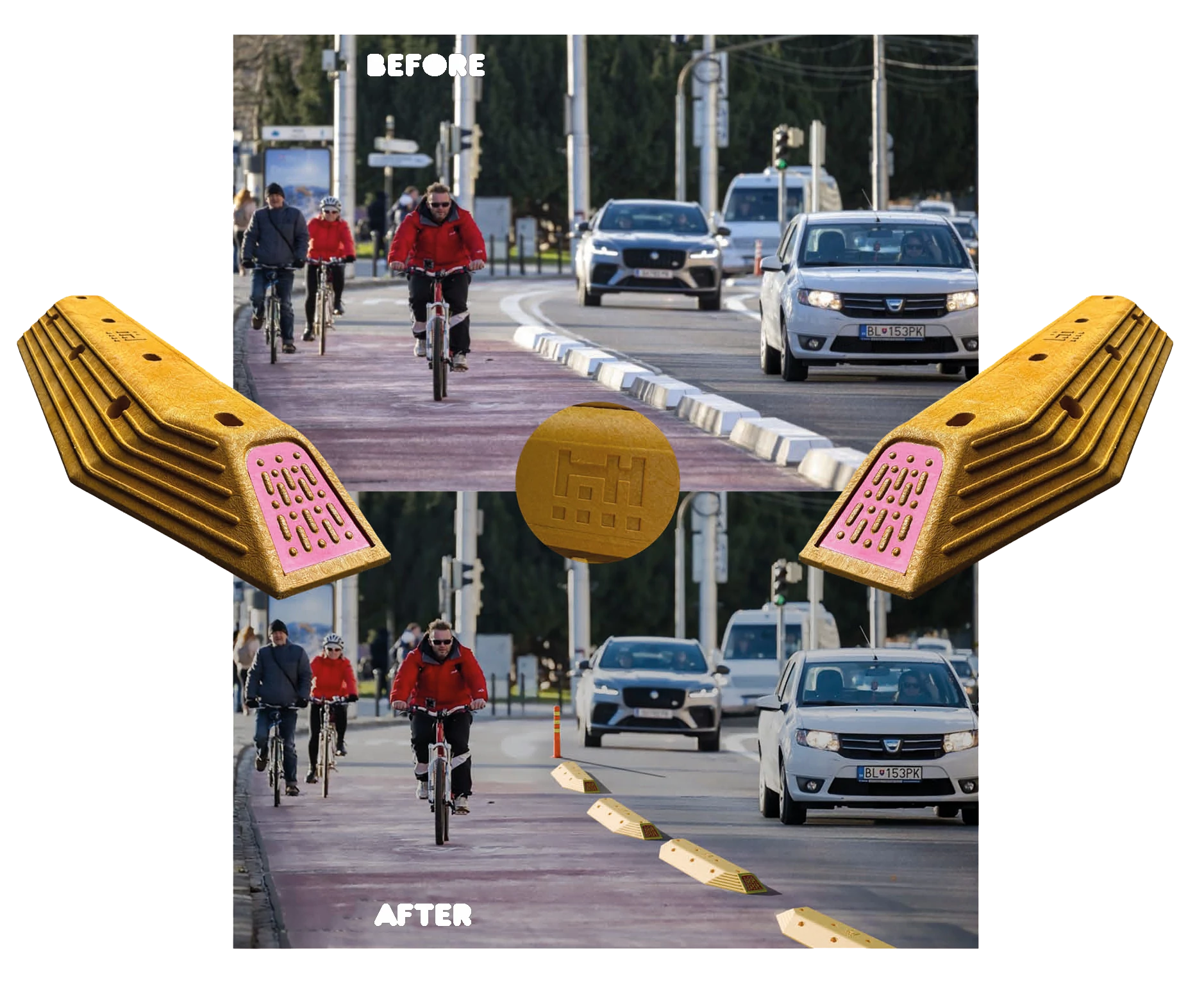
Why Bratislava’s Cycling Corridor Needed an Upgrade
When concrete separators were added in 2023, concerns quickly followed. Cyclists had less room to ride, winter maintenance became a challenge, and sudden swerves could turn dangerous. Acting on advice from the Ministry of Transport and the Regional Transport Inspectorate—and guided by feedback from its own residents—the city chose a new path: a modern solution that ensures cyclist safety without slowing down vehicle traffic.
Long-term usability was another important factor. The original rigid-curb design complicated maintenance and repair tasks. Each intervention involved extensive work, leading to prolonged lane closures that directly impacted the daily life of Bratislava’s citizens.
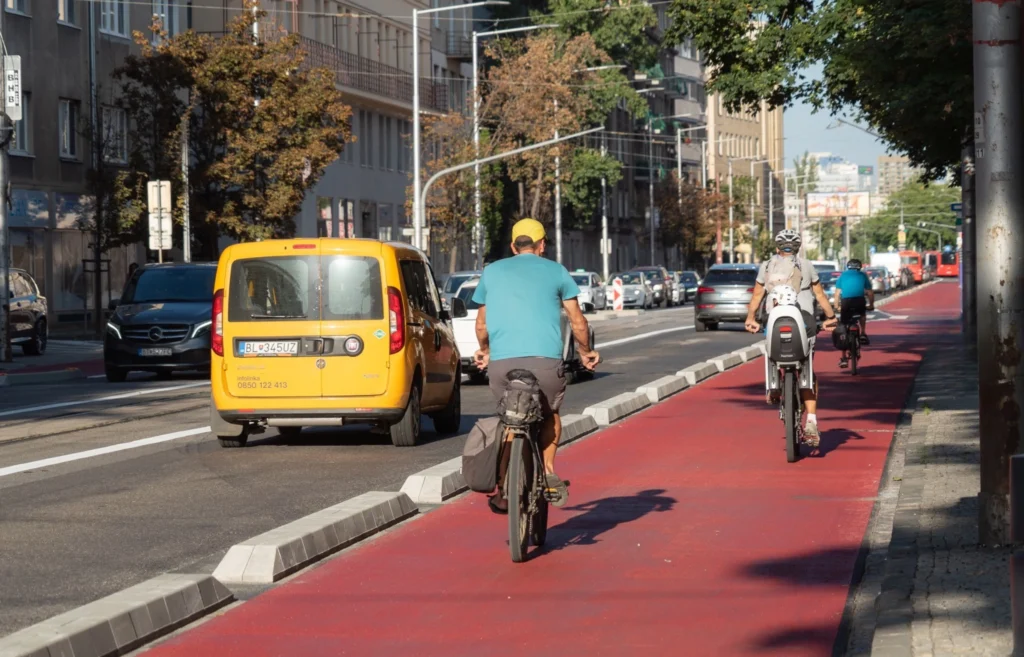
H7 Lane Separator: Pioneering Innovation, Crafted in Mexico
As part of the renewal. Bratislava introduced the H7 Lane Separator, made in Mexico from tough, high-resistance polymer. Unlike rigid concrete barriers, it sits lower and flexes on impact, reducing the chance of injury. Its beveled edges gently guide bicycles along the lane, while reflective strips make nighttime rides safer and more visible.
What’s more, the H7 Lane Separator is designed for quick and easy installation. Should a section become damaged, it can be swapped out immediately without closing the lane—keeping the route functional and reducing maintenance costs, while ensuring cyclists can keep riding safely.
Improving the rider experience was essential, as many cyclists had felt exposed navigating between concrete separators and busy traffic. By redesigning the lane and adding the H7 Lane Separator, Bratislava made a significant move to encourage cycling and transform this route into a safe, convenient, and dependable choice for everyday travel.
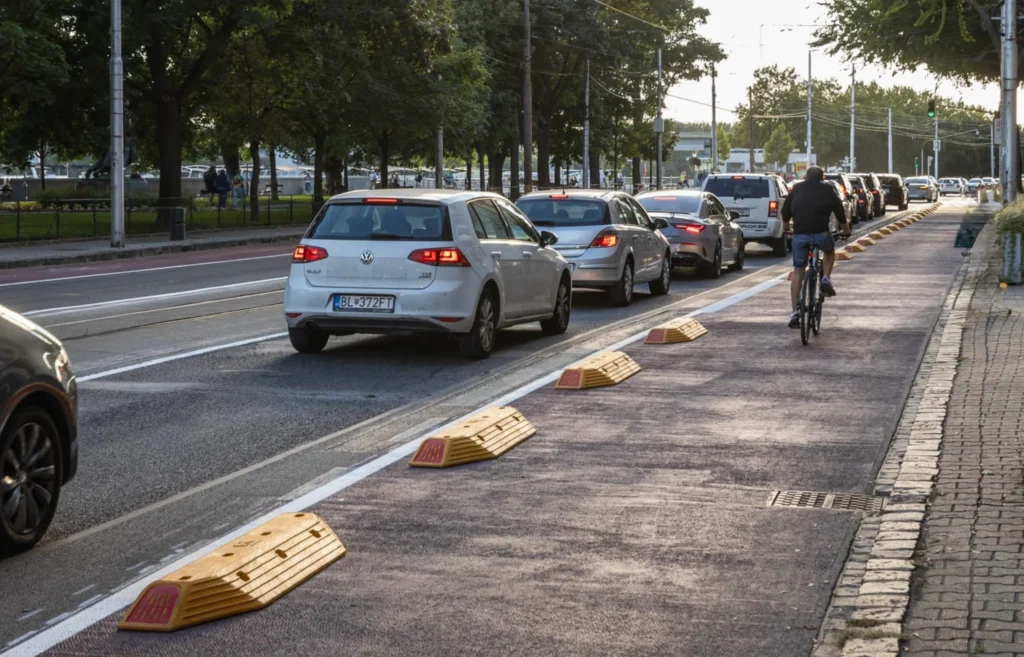
Bratislava’s Cycling Corridor: Advantages for Cyclists and Citizens Alike
Strategically positioned, new lane delimiters expand roadway while preserving ample space for cyclists. Horizontal signage was refreshed with bolder, highly visible lines. Resulting outcome is a safer, more organized route that minimizes interactions between vehicles and bikes.
The improvements bring instant advantages:
- Greater safety for cyclists: The H7 Lane Separatorr absorbs minor impacts and builds confidence.
- Reduced accidents: Elimination of hard edges lowers the risk of serious falls.
- Safer sharing of the road: Motorists benefit from a clearly defined lane and fewer accidental intrusions.
- Easy maintenance: Replaceable parts and faster winter cleaning.
- Anti-skid safety: Features a side ramp that helps cyclists recover safely and continue on their path.
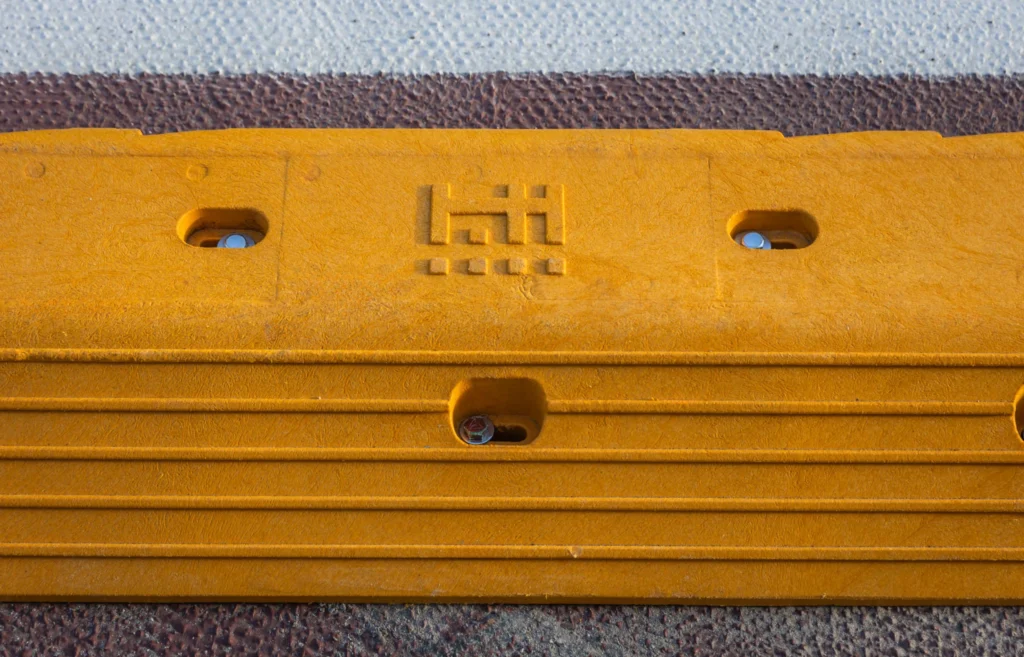
The H7 Lane Separator: Built with a Distinct Identity
One notable feature of this renovation is that each H7 Lane Separator bears the official logo of the city of Bratislava. This customization gives the bike lane its own identity, reminding users that it is an urban project designed for their benefit.
Adding the logo to every piece goes beyond aesthetics—it signals transparency and civic pride. Cyclists and pedestrians can see that the infrastructure is part of an official urban mobility plan rather than a temporary solution. The visual identity also helps users recognize the channelizer system and fosters a stronger sense of belonging.
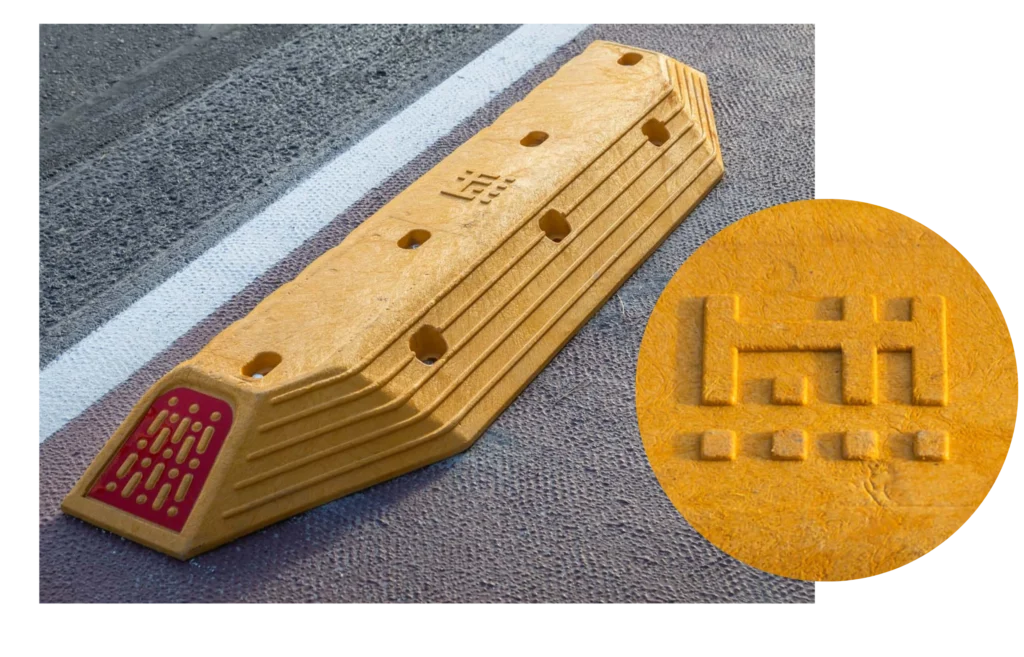
Through this feature, Bratislava conveys a strong message: upgrading its bike network is a top public priority, and the city’s logo on every renewed segment highlights its dedication to citizen safety and quality of life.
Bratislava’s Commitment to Sustainable Mobility: A New Cycling Corridor Initiative
This intervention is part of a larger plan to strengthen the capital’s bike lane network. The capital of Slovakia aims to increase the number of cyclists, reduce car dependency, and improve air quality in the heart of the European city.
This adoption of the H7 Lane Separator also reflects global cooperation. Having been successfully used in over 20 cities worldwide, it turns the Slovak capital into a benchmark for innovation in urban cycling infrastructure.
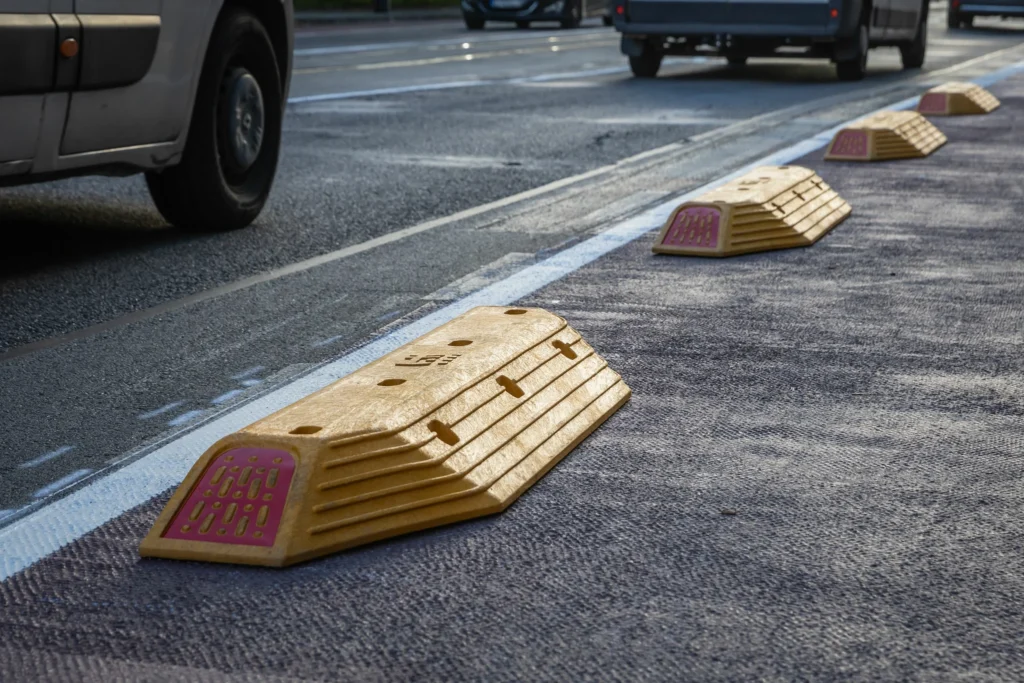
A Project That Paves the Way
Bratislava’s bike lane upgrade demonstrates that even heavily criticized spaces can become safe, functional corridors. This project sets the stage for future enhancements and the ongoing creation of streets that put people first. The city sends a clear message: cycling through Bratislava should be an experience of freedom and confidence.
Projects like this are already having an impact in other cities: in Berlin, Germany, similar solutions have been implemented to protect cyclists (see case here) and cycling infrastructure has also been strengthened in Mexico and other countries (read more here).
Through this upgrade, Bratislava offers both cyclists and motorists a well-organized, functional space that enhances daily mobility.

